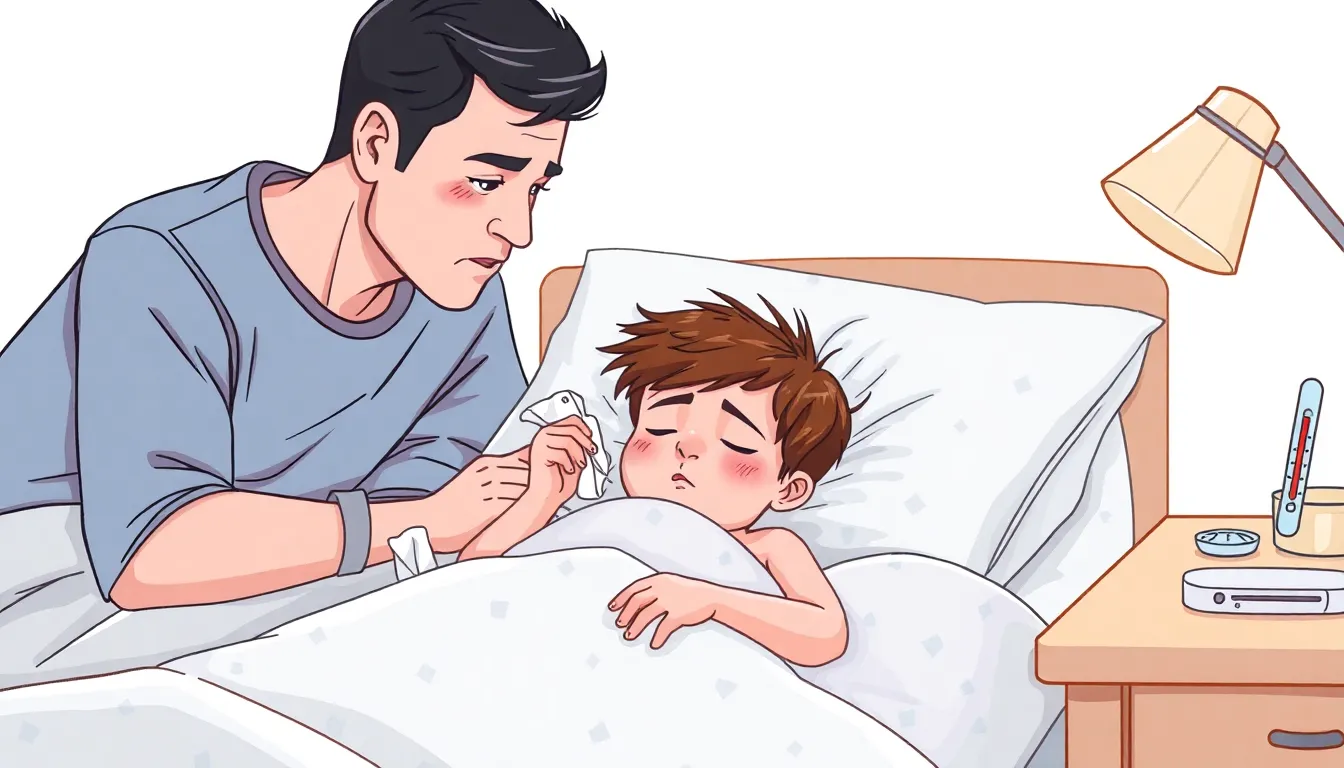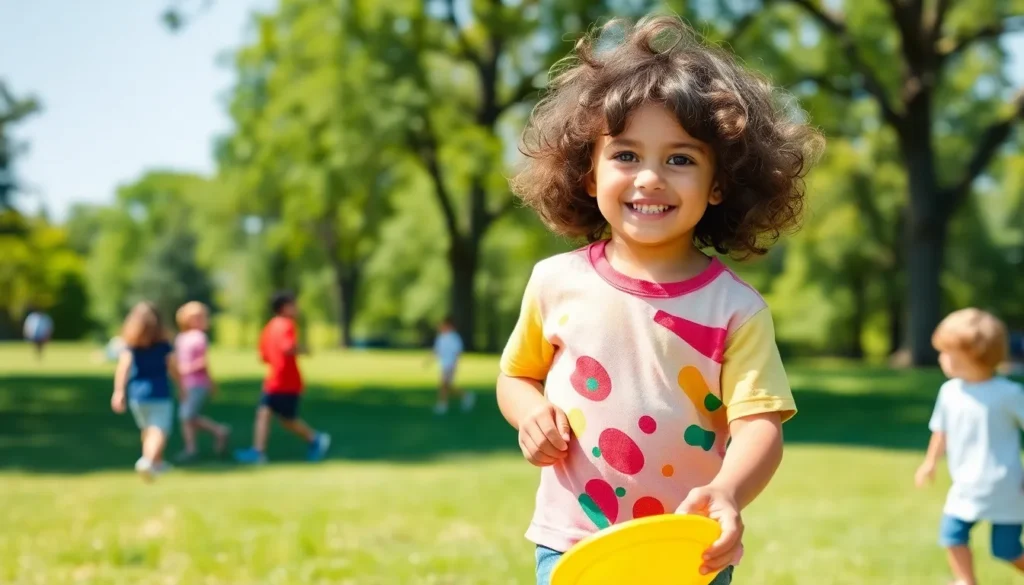Table of Contents
TogglePneumonia might sound like a character from a sci-fi movie, but it’s a very real threat lurking in the shadows of childhood. Kids are like little explorers, constantly pushing boundaries and testing their immune systems. Unfortunately, this adventurous spirit can sometimes lead them right into the clutches of pneumonia.
But how does this happen? It’s not just about catching a chill from a winter breeze or having one too many ice cream cones. Understanding the ins and outs of pneumonia can help parents stay ahead of the game. From pesky germs to environmental factors, knowing the causes can arm caregivers with the knowledge to protect their little ones. Let’s dive into the world of pneumonia and uncover what really puts kids at risk.
Understanding Pneumonia in Children
Pneumonia in children stems from various causes, primarily involving infections from bacteria, viruses, or fungi. Common bacteria include Streptococcus pneumoniae, a major contributor. Viral infections like influenza and respiratory syncytial virus (RSV) also play significant roles, especially in younger children.
Concerns rise in environments with poor air quality. Pollution and secondhand smoke can irritate the lungs, increasing vulnerability to infections. Kids with weakened immune systems or chronic health issues are at higher risk for developing pneumonia.
Exposure to contagious individuals raises threats as well. Coughing, sneezing, and even touching contaminated surfaces facilitates germ spread. Understanding these transmission methods proves essential for prevention strategies.
Symptoms typically manifest quickly and can vary. Cough, fever, and difficulty breathing often indicate pneumonia. Children may also experience chest pain and fatigue. Recognizing these signs early aids in prompt medical evaluation and treatment.
Vaccinations help reduce pneumonia risks. Vaccines for pneumococcal bacteria and influenza significantly decrease incidence rates. Parents should keep immunization schedules up-to-date to protect their children effectively.
Preventive measures enhance safety further. Encouraging respiratory hygiene, such as handwashing and covering coughs, plays a critical role. Additionally, maintaining a smoke-free environment supports lung health, contributing to overall well-being.
Understanding the causes, symptoms, and prevention methods of pneumonia equips parents. Increased awareness leads to better protective measures, enhancing children’s health and safety.
Common Causes of Pneumonia

Pneumonia in children occurs due to several key factors. Understanding these causes helps in identifying risk and prevention methods.
Viral Infections
Viral infections frequently lead to pneumonia in children. Influenza, for instance, significantly contributes to pneumonia cases. Respiratory syncytial virus (RSV) poses a serious threat, especially in infants and toddlers. Some common cold viruses can also initiate pneumonia when they weaken a child’s immune defense. Children exposed to respiratory viruses might show symptoms that escalate quickly, requiring medical attention. Recognizing these viral threats supports timely intervention and treatment.
Bacterial Infections
Bacterial infections stand as major culprits in pediatric pneumonia cases. Streptococcus pneumoniae plays a leading role among bacteria causing this illness. It can lead to more severe symptoms and complications. Other bacteria, such as Staphylococcus aureus and Haemophilus influenzae, also contribute to infection. Contact with infected individuals often facilitates the spread of these bacteria. Monitoring respiratory symptoms in children can enable parents to act swiftly when bacterial pneumonia is suspected.
Fungal Infections
Fungal infections, though less common, still represent a risk for pneumonia in children. Fungi like Pneumocystis jirovecii can cause pneumonia in immunocompromised individuals. Environments with mold exposure may increase the likelihood of developing fungal pneumonia. Children with weakened immune systems are particularly vulnerable to these infections. Awareness of fungal risks enhances preventive measures, ensuring children remain healthier and less exposed to potential threats.
Risk Factors for Kids
Understanding risk factors for pneumonia in children helps parents take preventive measures. Certain conditions elevate the risk, including age, environmental aspects, and underlying health status.
Age and Development
Young children face a heightened risk of pneumonia due to their developing immune systems. Infants, especially those under two years old, struggle to fend off infections effectively. Their small airways make them more susceptible to respiratory issues. Toddlers also frequently encounter germs when exploring their environment and socializing with peers. As children grow older, risk factors decrease, but infants remain particularly vulnerable.
Environmental Factors
Environment plays a significant role in a child’s likelihood of developing pneumonia. Poor air quality continues to be a critical concern. Exposure to pollutants and secondhand smoke significantly irritates the lungs, making them more prone to infections. Additionally, crowded living conditions can facilitate the spread of respiratory germs. Parents should prioritize clean indoor air and limit exposure to harmful substances. Maintaining a smoke-free home greatly reduces respiratory risks for children.
Underlying Health Conditions
Underlying health conditions also contribute to an increased risk of pneumonia. Children with weakened immune systems face greater challenges in fighting off infections. Chronic illnesses, such as asthma, diabetes, or congenital heart issues, can further complicate respiratory health. High-risk children require close monitoring for pneumonia symptoms. It’s crucial to consult healthcare providers for necessary vaccinations and preventive care tailored to these children’s specific needs.
Symptoms to Watch For
Recognizing pneumonia symptoms in children is crucial for timely medical intervention. Early detection significantly improves recovery outcomes.
Early Signs
Coughing often appears first and may progress in severity. A slight fever might develop, and children could exhibit fatigue. Rapid breathing or wheezing indicates respiratory distress. A decrease in appetite often accompanies these symptoms. These early indications require prompt attention to prevent complications.
Severe Symptoms
Severe symptoms warrant immediate medical care. Difficulty breathing may intensify, with visible retractions of the chest muscles. High fever often exceeds 102°F, signaling serious infection. Persistent coughing, especially when accompanied by green or yellow mucus, raises alarm. Confusion or lethargy in children indicates a more serious condition. Recognizing these symptoms ensures timely treatment, reducing the risk of severe pneumonia.
Pneumonia remains a significant health concern for children due to its various causes and risk factors. Parents must be proactive in safeguarding their children’s health by understanding how pneumonia can develop from infections and environmental influences. Recognizing early symptoms and ensuring timely medical intervention can make a substantial difference in recovery outcomes.
Maintaining a smoke-free environment and keeping up with vaccinations are essential steps in prevention. By staying informed and vigilant, parents can help protect their little ones from this serious illness, ensuring their adventurous spirits remain unhindered.







